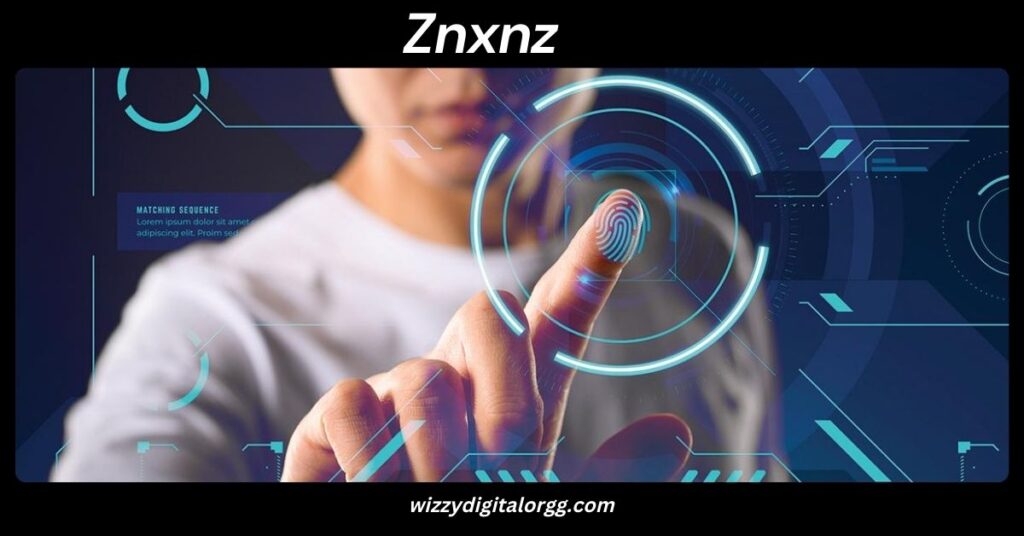
In the world of programming and software development, the use of placeholders is an essential concept that helps developers manage and organize data efficiently. These placeholders allow developers to test, debug, or simulate data during the development process without relying on the actual data, which might not be available or might not yet be defined. One such placeholder term that has appeared in discussions, tutorials, and forums is “znxnz.” This term, though obscure, has begun to surface as a potential placeholder in various programming languages or as an element in a code snippet, particularly when developers require a temporary value.
In this article, we will delve into what znxnz means in programming, its role in software development, and why developers might choose to use it in their projects. We will also explore how the term fits within the larger framework of placeholder values, its potential uses, and offer practical examples and FAQs to provide a deeper understanding of the topic.
What is znxnz in Programming?
In programming, placeholder terms like znxnz serve a specific role during software development. Placeholder values are typically used in code to represent data that will be replaced with real values later. These values are temporary, allowing developers to move forward with coding without needing to rely on specific data that may not be available at the moment.
While znxnz may seem like an arbitrary sequence of letters and numbers, it could be used as a stand-in for different types of data, such as variables, strings, or numbers. The beauty of placeholders like znxnz is that they help maintain the flow of development, letting developers continue their work without having to pause and search for the appropriate data every time they need it.
In many ways, znxnz acts like any other placeholder (e.g., “foo,” “bar,” or “temp”) used in software development. It provides a structure where actual data will eventually reside, and its meaning is defined by context, not by the term itself.

Why Are Placeholders Important in Programming?
Placeholders are an invaluable tool for developers for several reasons:
1. Ease of Testing and Debugging
When testing a piece of software, developers may not always have access to the actual data that will be used in a final product. Using placeholders such as znxnz allows them to test logic, functionality, and other components without worrying about whether real data is available. It ensures that the code can be tested in parts, allowing developers to identify potential issues early in the development cycle.
2. Separation of Concerns
Placeholders help to keep different aspects of the software development process separate. By using a placeholder like “znxnz,” developers can focus on writing the logic or structure of the application without being concerned about the actual data until later in the process. This separation helps improve code readability and makes it easier to update specific components without affecting others.
Also Read: ShutterGo: The Smart Photography App Revolutionizing Content Creation
3. Simplicity in Code Examples
Placeholders are also commonly used in documentation and tutorials. In this case, the placeholder value (like znxnz) stands in for actual data to make examples clearer and more generic. This allows readers to understand the structure of the code without getting distracted by data specifics. It also prevents the need for creating new data sets for every example.
4. Filling in the Gaps
Sometimes developers don’t have access to all the necessary data upfront. Using placeholders like znxnz allows them to move forward with their code while leaving space for data to be plugged in later. This can be especially useful when integrating APIs, databases, or other external data sources.
How znxnz is Used in Software Development
The use of znxnz as a placeholder in programming may vary depending on the programming language or the development environment. Let’s explore a few potential uses of this placeholder in various programming scenarios.
1. As a Variable in Code
In many programming languages, a placeholder like znxnz might be used as a temporary variable name. Consider the following Python example:
znxnz = “Placeholder Value”
print(znxnz)
In this case, znxnz is just a stand-in for a real variable that will eventually be replaced by actual data when it becomes available.
2. As a String in Templates
In template-based frameworks, placeholders like znxnz can be used to represent dynamic content that will be replaced by real values during runtime. For instance, in a web template system:
<p>The placeholder value is: {{ znxnz }}</p>
Here, znxnz would eventually be replaced with actual data when the template is rendered. During development, it serves as a temporary marker to signal where data should be inserted.
3. As a Placeholder for Missing Data
Placeholders can also be used to signal missing data in databases or APIs. For example, if a developer is working on an application that connects to a third-party API but the API is unavailable during development, the placeholder value znxnz could be used to represent missing data.
{
“user_name”: znxnz,
“email”: znxnz
}
In this case, znxnz might be used as a signal to replace it with actual user data later, once the API becomes functional.
4. As a Temporary Value in a Function
Developers can use placeholders like znxnz as a temporary value within functions when the actual data or value isn’t available yet.
Also Read: CDiPhone: Revolutionizing Your iPhone’s Music Experience
function processData(data) {
let result = data || znxnz;
console.log(result);
}
Here, znxnz is used as a default fallback when no data is passed to the function.
Benefits of Using znxnz as a Placeholder
Using placeholders like znxnz can help to maintain the flow of development and testing, offering several distinct advantages:
1. Flexibility
Placeholders allow developers to remain flexible during the development process. They don’t have to worry about accessing or storing real data at every stage of the project.
2. Improved Code Readability
By using placeholders, developers make their code more understandable and maintainable. Others reviewing or contributing to the project can easily see that the placeholder is a temporary solution and not a final implementation.
3. Simplified Development Process
In projects that involve multiple components or teams, using placeholders like znxnz simplifies communication and collaboration. Developers can proceed with their part of the work, knowing that placeholders will be replaced with real data in due time.
Potential Alternatives to znxnz
While znxnz might be a term used for placeholders in some cases, there are many other placeholder terms that developers might use depending on the context. Common alternatives include:
- foo
- bar
- temp
- placeholder
- dummy
These alternatives serve the same purpose as znxnz in that they are temporary markers for data that will be replaced later.
Also Read: Anonib AL: Everything You Need to Know
FAQs About znxnz in Programming
Here are some frequently asked questions that might help clarify any lingering doubts about “znxnz.”
What Does znxnz Mean in Programming?
znxnz is a placeholder value that developers use in programming as a temporary substitute for data or variables that are not yet available. It does not have any intrinsic meaning and is usually used during testing or as part of code examples.
Can znxnz Be Used in Any Programming Language?
Yes, placeholders like znxnz can be used in virtually any programming language. Whether in JavaScript, Python, HTML templates, or JSON files, znxnz serves as a placeholder that is replaced by real values later on.
Is znxnz a Standard Placeholder Term?
No, znxnz is not a widely recognized standard placeholder term like “foo” or “bar.” It is more of an ad hoc placeholder that might be used in specific contexts by developers. However, it is no different in function from other placeholder terms.
Can I Use Other Terms Instead of znxnz?
Absolutely. While znxnz is used in some cases, you can choose any placeholder term that suits your project. Terms like “temp,” “dummy,” or even “placeholder” are more commonly used, but ultimately, the choice of placeholder depends on personal preference or project conventions.
Why Do Developers Use Placeholder Values Like znxnz?
Placeholders allow developers to continue working on their code without needing actual data or values. They help in testing, debugging, and creating mockups, ensuring that the project continues progressing even if some components are missing.
When Should I Replace Placeholders with Real Data?
You should replace placeholders with real data once the actual values are available or once the part of the project that requires the data is ready to be integrated. This typically happens in later stages of development, such as during data population, database integration, or API calls.
Conclusion
Placeholders, including the term “znxnz,” play a crucial role in software development by allowing developers to proceed with coding, testing, and debugging even when the actual data is not yet available. Understanding the importance and applications of placeholders can significantly improve development efficiency and help streamline the overall software development process.
Whether used as a temporary variable, a default value, or part of a code example, placeholders like znxnz enable developers to create robust and flexible applications. While the term itself might not be widely recognized, it follows the same principles as other placeholders, making it an effective tool in any developer’s toolkit.
By embracing the concept of placeholders, developers can maintain their productivity while ensuring that their code remains adaptable to changes and real data as the project evolves.



